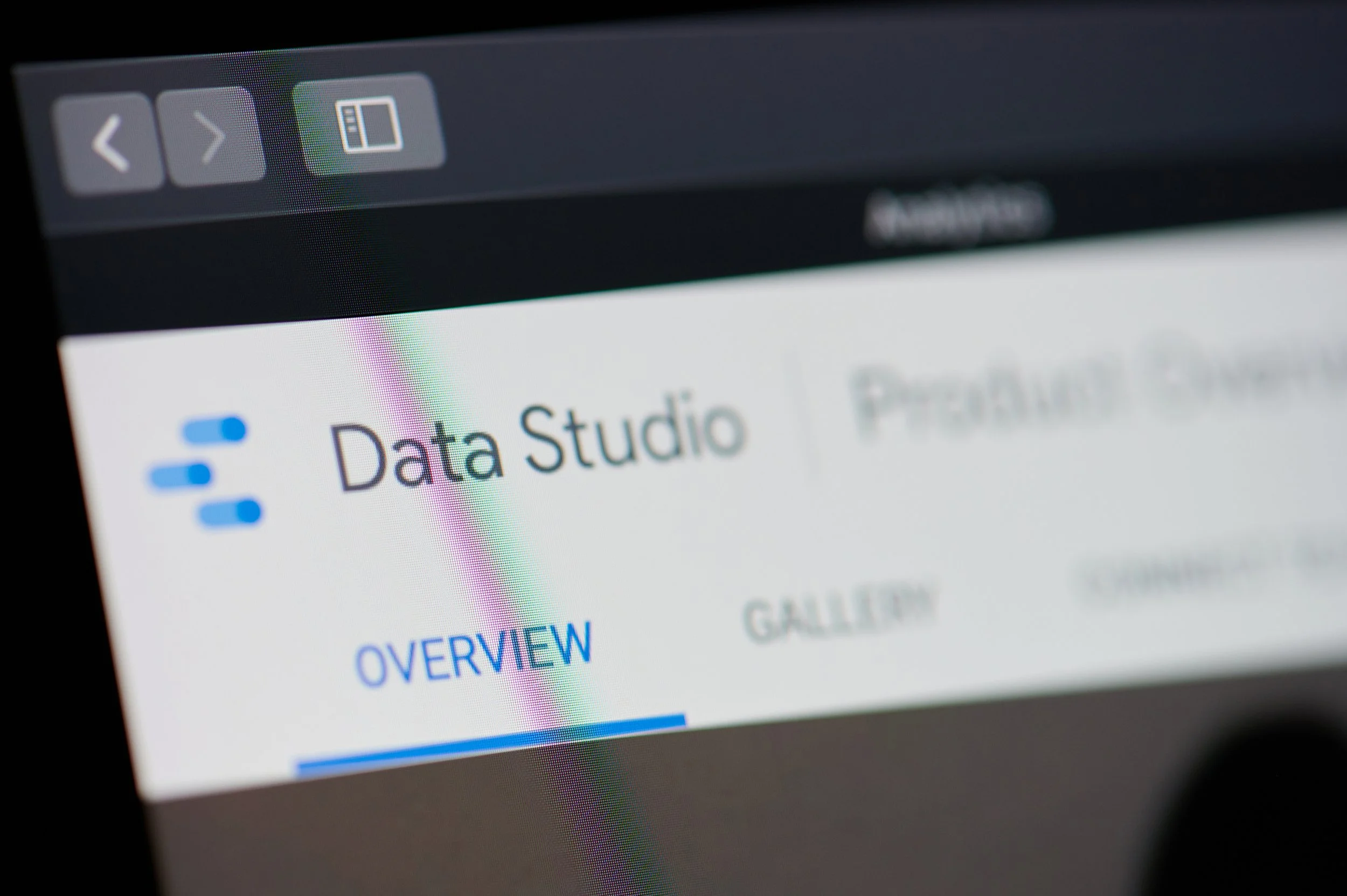Google Data/Looker Studio. It's free, but is it any good?
Introduction
In this article I’m going to be reviewing Google’s BI tool, Data Studio. It’s completely free to use but is it any good? Let’s find out.
So I’ll be evaluating Data Studio based on the 6 major differentiators of BI tools that I talked about in a previous video. If you haven’t seen that yet then check it out here.
The 6 differentiators are connectors, data management, calculations, data visualisation, interactivity and publishing. Let’s dive straight in
Connectors
So, connectors are the data sources that the tool will let you ‘connect’ to. With Data Studio, these are separated out into 2 different groups. Google provided connectors and those created by 3rd party developers that are offered via the Data Studio platform.
Let’s start with the Google connectors. The majority of them are for products and services within the Google ecosystem, so things like Google Analytics, Ads, Sheets, Search Console and Youtube. In addition to these you also have connectors for MySQL and PostgreSQL databases. And then you have a connector for uploading csv files.
All of the Google provided data connectors are 100% free to use. Contrary to the 3rd party developed, partner, ones which you’ll need to pay for. I say that but I haven’t actually been through all of the 280 connectors available at the time of recording this to check. But it’s a pretty good guess to say that you’re either paying to use the connector or you’re already paying to use the service that the connector is for.
Anyway, having 480 partner connectors at your disposal (at the time of writing) with more being added all the time is pretty amazing. And considering that Data Studio itself is free to use, it means that you’re only really paying for connectors that you actually need and not a bunch of ones that you never will.
If you scroll through the list of all of the available data sources, you may notice that there are some icons that appear more than once. Basically there are a few developer partners who offer a whole range of different connectors that you can sign up to at once. I’m talking about partners like Supermetrics and Power My Analytics.
Data Management
Now, data management. This relates to things like how tools store data and the functionalities available for joining data sources together.
This is perhaps one area where you’ll find Data Studio to be fairly limited. So what can it do?
Well, when it comes to the Google data sources, Sheets, Analytics, Ads etc, Data Studio doesn’t store any of the source data by default. The data sources are queried where they are via their APIs.
The only data that Data Studio does store are the results of queries. This functionality is called Data Freshness and you can set it for each data source you create.
The way it works is that when you execute a query, Data Studio stores the result. If the same query is executed again during the Data Freshness interval you set, Data Studio won’t go back to the original data source to ask for the same results, it will simply go and retrieve them from the results cache.
At the end of the Data Freshness interval, the cache empties itself and starts collecting results again. Basically, it’s a simple way of speeding up the delivery of query results.
One way that Data Studio does store data is via one of its connectors called Extract Data. Basically, once you’ve created a data source you can then use this connector to upload a snapshot of it to Google’s servers.
This snapshot can then be auto-updated either daily, weekly or monthly. So it’s not that flexible. Also, it does have limits. You can only extract up to 100mb of data for each data source.
When it comes to joining different data sources together, Data Studio does have a data blending functionality that can be very useful for basic use cases. However, it is quite limited.
Firstly, you can only join data sources together using a LEFT OUTER JOIN. If you’re not familiar with what this is then don’t worry, just know that it’s only one of 4 different possible join types. More advanced BI tools will allow you to choose between the different join types.
Secondly, and even more limiting for me, is that you can’t do calculations across blended data sources. So, you can’t, say, take one metric from one data source and multiply it by a metric from another with blended data. This brings us on nicely to point number 3.
Calculations
When it comes to calculations in Data Studio, you can create new calculated fields using various functions. The syntax is based on SQL so if you’re already familiar with SQL you should find writing formulas fairly easy.
If you’re not then there will be the obligatory learning curve before you become proficient. Apart from being able to duplicate existing fields and modifying their properties, all new fields are created by writing formulas, there’s no graphical interface to make life easier.
For most simple formulas and calculations, the vast majority, Data Studio is perfectly fine and will be able to handle what you need it to.
And Google are constantly updating the tool and improving the calculation engine. I’m thinking specifically about the new IF function that fixed a major issue whereby you couldn’t compare one metric or dimension to another to test conditions in formulas.
Another fairly recent addition to Data Studio are ‘Parameters’ that you can use in basic predictive analysis situations. They allow you to set variable number of text values that can be referenced in and impact other calculations. If you want to find out more about these new Parameters, check out this article here.
There may be certain limitations that you may come up against that you would expect to be possible but that aren’t. What this means in practical terms is that you might need to do some of the calculations in the original data source before connecting it to Data Studio.
Which is fine if you’re working with Google sheets but not if you don’t have access to the underlying source data. So, my verdict is that if you’re just starting out with BI tools or if your reporting needs aren’t too advanced, you’ll find Data Studio does everything you need it to.
If you’re looking for more advanced calculation functionalities then you might be a little disappointed.
If you want to start using Google Data Studio but feel you need some help then I actually have an online course you might be interested in. It’s 5 hours of on-demand video tutorials that will get you up and running faster and further than if you were to go it alone.
Data Visualisation
Next up, data visualisation. This relates not only to the different visualisation types available but also how they’re built within the interface.
When it comes to visualisations, there are currently 33 variations on 13 different visualisation types to choose from. Everything from basic tables and scorecards through to bullets and treemaps.
In fact there are all the most common types and everything you’ll need for most of your visualisation needs. But that’s not all that’s available. There are also what are called Community Visualisations.
Ones that have been built by 3rd parties and that are also available to use for free in reports and dashboards. So you have things like candlestick and waterfall charts that can be useful for stocks and financial data.
The way you build each of these different visualisations is made as simple as possible by Google in the Data Studio Interface.
Basically, for each chart, graph, table etc only the elements necessary for building each specific type are displayed. This is great, if you’re a beginner to BI tools, because it eliminates almost entirely the chance that you’ll add something somewhere you shouldn’t.
For each visualisation, you have a data tab and a style tab. The data tab is where you add dimensions and metrics to build and configure the query to set date periods and add filters. And the style tab is where you can configure the look and feel of the visualisation. Colours, fonts, axes, etc.
For the most part you’ll build all your visualisations in Data Studio’s report builder. There is a functionality called Data Explorer which allows you to more easily analyse and discover your data outside of the report builder.
But Data Studio’s workflow seems to emphasise going straight from connecting your data to building reports. Which is absolutely fine but I think I’d prefer more separation and distinction between data discovery and building dashboards.
You can actually build some really good-looking and interactive dashboards with Data Studio. There are lots of different themes available or you can create your own customised theme.
However you can’t actually save your custom themes, you can only duplicate an existing report that has your custom theme to use again which isn’t great.
Other than the visualisations themselves you can also add things like filters, text boxes, shapes and images. And you can embed content from external sources like Google docs or YouTube. Overall pretty good AND very easy to use. It’s kind of like building interactive powerpoint slides.
Talking of interactivity…
Interactivity
When it comes to interactivity, you can break this down into 2 categories. First you have visualisation-level interactivity and second you have report-level interactivity. As you can imagine, the first is added to visualisations and the second is added to reports as a whole.
For individual visualisations you have different options depending on the type of chart but for most of them you can apply drill down functionality to be able to go from one level of data down to another.
You have what are called optional metrics which let you change the metric contained in a chart of a report. Metric sliders to be able to change the range of values contained in a chart and the Apply Filter functionality that allows you to click on elements within charts and use them as filters that can be applied to all other charts from the same data source. It’s something that I like a lot and find very useful.
In terms of report level interactivity, you can add things Data Studio calls Controls. Basically filters. Data range filters as well as standard data filters. And there are different ways of displaying these filters in a report.
You have things like drop down lists, fixed size lists, input boxes and sliders. You really do have all the tools you need to make some really good-looking and interactive dashboards.
Publishing
Publishing reports in Data Studio is very similar to sharing in Google as a whole, with Docs and Sheets etc. You can add people to your report via their email address or name if they’re in your organisation, and you can set what permissions they have. Either Editor, Viewer or both.
Then you have the less secure link-sharing options. These are, anyone within your organisation can edit or view, anyone with the link and then anyone on the internet. Though quite why you’d want anyone on the internet to edit your reports is a complete mystery to me.
Another great feature when it comes to reports is the ability to embed them into webpages, blog posts etc.
But it’s not just reports that you can share. Data Studio is a collaborative tool so you can work on building dashboards with other people by also allowing them access to data sources within the account.
Verdict
Overall Google Data Studio is a fantastic tool for anyone who wants to get started in BI or who simply wants to go beyond Excel and product automated interactive reports.
The interface is very easy to navigate around and the workflow is kept as simple as possible. What’s more, it is completely free to use so you can get better than that.
As with any tool there is a learning curve to becoming proficient, especially when it comes to writing formulas for calculated fields and getting to grips with some of the more advanced functionalities but, like with any tool, the more you use it the more you’ll get to grips with it.
If you want to start using Google Data Studio but feel you need some help then I actually have an online course you might be interested in. It’s 5 hours of on-demand video tutorials that will get you up and running faster and further than if you were to go it alone.










